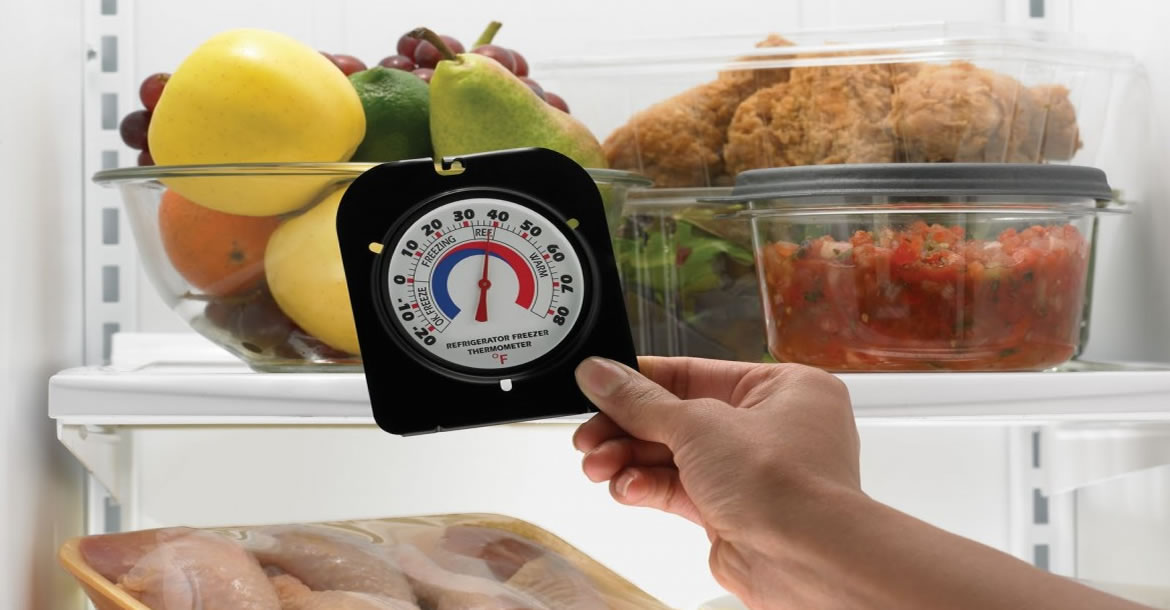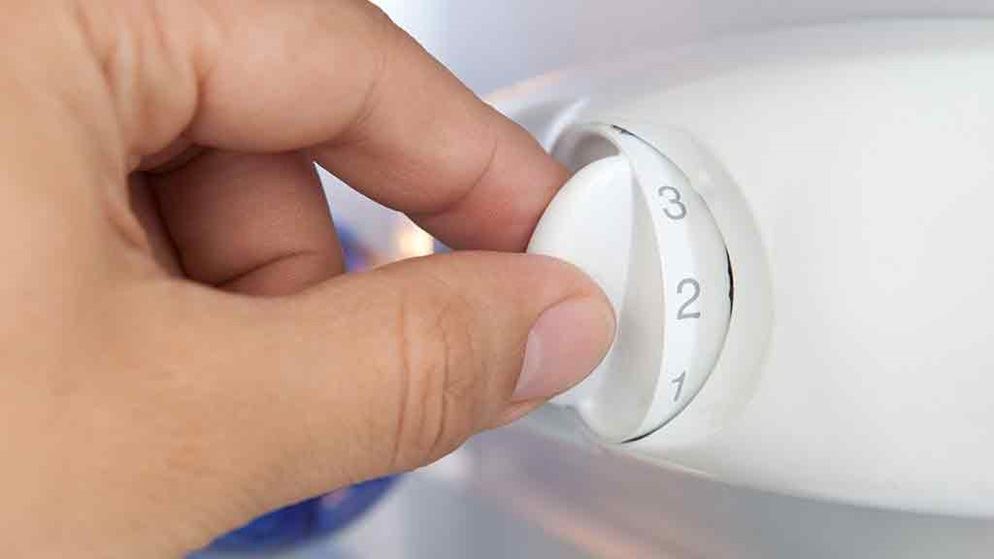Commercial Refrigeration Safety Guidelines
Posted by CANDY POSA

Anyone with any experience in the food industry knows that closely following safety procedures is incredibly important when it comes to protecting food in commercial refrigeration or freezers. Proper temperature control ensures that your perishable food items are adequately cared for and are less susceptible to foodborne illnesses.

Safely storing perishable food
Not all food is the same, though, when it comes to keeping it in a commercial refrigerator or walk-in cooler. For example, a walk-in cooler is kept at a colder temperature, which slows down the ability for bacteria to grow. As a result, it’s the perfect place to store any perishable foods, including cooked meats, in addition to fruits and vegetables. The other option is a freezer, which can stop the growth of bacteria entirely.
Commercial Food Storage: 3 Types of Perishable Foods
Commercial food storage is an important part of food manufacturing. So let's take a look at the three main categories of perishable foods.
 IMMEDIATE PERISHABLE FOODS
IMMEDIATE PERISHABLE FOODS

SEMI PERISHABLE FOODS
LONG LIFE SHELF FOODS
Click Below To View Products Suitable for Food & Drinks
Optimal food storage temperatures
Much like each food has a different taste or texture, everything from bell peppers to raw meat requires its own temperature to follow safety guidelines for food storage. Some foods are incredibly sensitive to cold temperatures, while others need it in order to be safely served. Here are a few guidelines from your commercial refrigeration contractor in Delaware when it comes to storing food in a freezer or walk-in:
- Walk-in coolers and refrigerators: Most walk-in coolers are set to approximately 36-45 degrees Fahrenheit. This temperature is crucial because anything less than that could cause the items to freeze, such as milk and dairy products. On the other hand, storing these foods above 45 degrees could cause it to spoil or could result in a variety of foodborne illnesses, including salmonella.
- Walk-in freezers: The temperatures of a walk-in freezer should be kept somewhere between zero degrees and -10. Remember that anything stored in these freezing temperatures will require a significant defrosting period. Otherwise, you could be serving your patrons half-frozen chicken—which is not just gross, but also a huge health hazard!
Maintaining the recommended temperatures
Just because you set the temperature as recommended doesn’t mean that it will immediately happen. It actually takes a bit of time to stabilize the overall temperature of the unit. The bigger the unit, the longer it will take for the new temperature to kick in. Usually, this can take about one day, but accidentally leaving the door open could slow down the process. If you’re still noticing the unit is failing to change temperatures, then consult a professional for commercial freezer and refrigeration repairs.
Remember to consistently check the thermostat to ensure that any food is being stored at a safe temperature consistent with regulations. Typically, this thermostat is located near the door and should be checked at least three times a day.
While properly training staff to recognize any potential issues, regularly checking the thermostat or any other safety procedures are great practices to have in place, they are practically pointless if the unit isn’t functioning properly. Regular maintenance from a qualified technician with Commercial Equipment Service will help you avoid costly emergency repairs, in addition to helping you avoid unexpected costs, spoiled food, sick customers and steep penalties from health inspectors. Contact your commercial refrigeration contractor in Delaware today, and our experienced staff will check to make sure your walk-in cooler or freezer is properly equipped to follow any safety guidelines.
The Proper Temperatures for Safe Commercial Refrigeration
Just because you have a refrigerator or freezer doesn’t mean it’s cold enough to store your perishable food products in it. This is especially true for commercial refrigeration products because the food service industry regulations are so strict. The temperature at which foods are stored can affect their appearance, taste, nutrient content and most importantly their safety.
The purpose of a refrigerator is to keep foods at a cooler temperature in order to slow down the growth of bacteria, making them ideal for perishable foods such as produce and cooked meats, while a freezer is intended to completely stop the growth of bacteria. The average temperature operating range for commercial refrigeration units is generally between 36F and 45F. If you store foods at a temperature lower than 36F you run the risk of freezing items that should not be, like milk and dairy products, whereas if you store them at a higher temperature than 45F the food could spoil. The FDA mandates that refrigerated products must be kept at 41 Degrees Fahrenheit or lower. But the colder the food is the longer it will last, making 38F an ideal temperature for commercial refrigeration. Freezer temperature ranges are generally much colder.
Some foods are more sensitive to cold temperatures than others, so the type of food you are storing as well as the type of refrigeration unit you are using will also affect the temperature you need to set. For instance, foods that require being stored below 35F will require a forced defrost cycle. Here are some general guidelines for temperature ranges based on the type of refrigeration unit you have:
- Reach-In Refrigerators 35F to 38F
- Walk-In Refrigerators 35F to 38F
- Reach-In Freezers +5F to -10F
- Walk-In Freezers 0F to -10F
- Ice Cream Freezers -10F to -20F
Commercial refrigeration units take time to stabilize their set temperatures and the bigger the unit the longer it takes. When adjusting the temperature wait for a full day and check it again before storing food products.
"Commercial refrigeration temperatures will rise the most when the equipment doors are open.
So how do you maintain the temperature once it stabilizes? Commercial refrigeration temperatures will rise the most when the equipment doors are open. Because equipment thermostats are located near the doors this can sometimes cause a false read. If temperatures are reading above normal try waiting 5 to 10 minutes with the door closed and then check the temperature again. Otherwise, you may wind up paying for a service call that you don’t need.
Be sure to educate your restaurant staff about the importance of keeping refrigerator and freezer doors and drawers closed. Because of the inaccuracies of the thermostats on equipment doors, you might want to consider a secondary thermometer to be placed under or near evaporator coil. If you have concerns about particular temperature sensitive foods you should also have thermometers in place for them or freezer alarms to signal you if there is a danger of thawing.
Looking for a Commercial Fridge?
T : 1300 885 693
E : info@ozcoolers.com.au
W : www.ozcoolers.com.au

